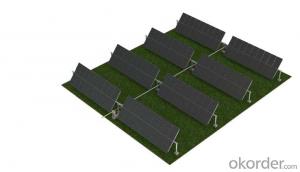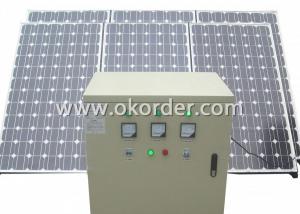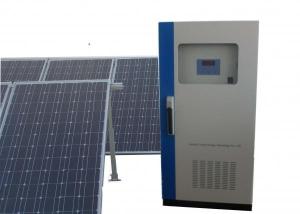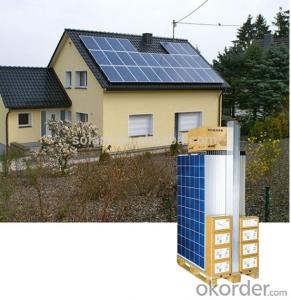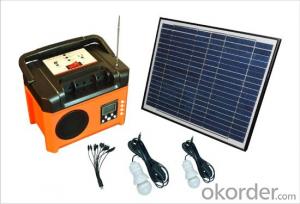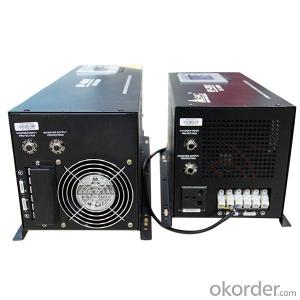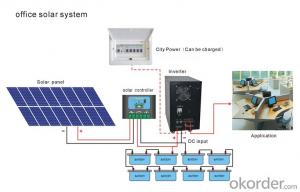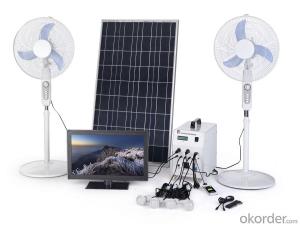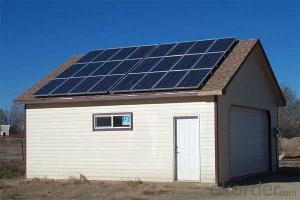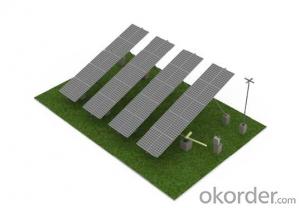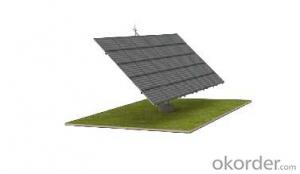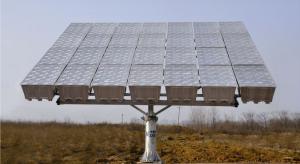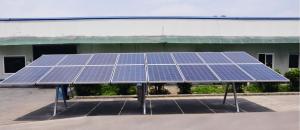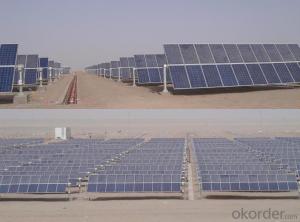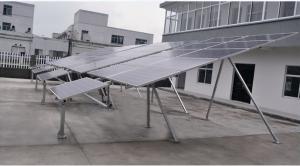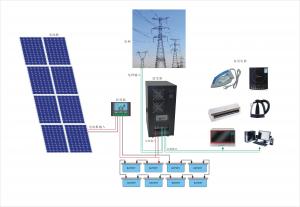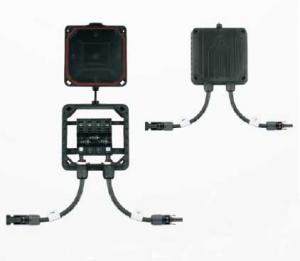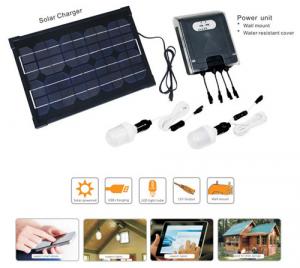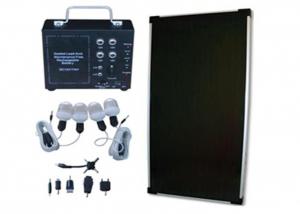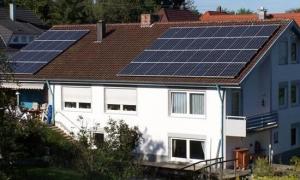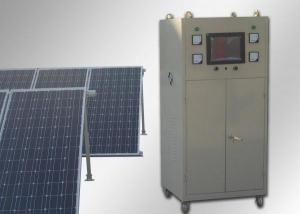Lux Solar Energy Systems Horizontal Single Axis Tracking System Solar Mounting System
- Loading Port:
- China Main Port
- Payment Terms:
- TT OR LC
- Min Order Qty:
- -
- Supply Capability:
- -
OKorder Service Pledge
OKorder Financial Service
You Might Also Like
Packaging & Delivery
Packaging Detail:Normal package seaworthy
Delivery Detail:15 days
Specifications
Easy installation Competitive price TUV&SGS test report & CSA certification 15-warranty
Specifications
1) Super smooth beautiful appearance,outstanding quality,large supply.
2) Available in customized surface finishes.
3) Well machined,for example,cutting,drilling and milling with excellent tolerance.
4) Meet with customer’s designs and supply you best price.
5)Usages:Supply for solar panel modules.
Technical characteristics
Installation site:
ground,hillside,and grassland
Installation angle
it is based on customers’ requirements
Installation height
it is basedon customers’ requirements
Solar panel type; with or without frame
Components arrangement :horizontal or vertical
Support track
aluminum alloy extrusion
Quality warranty
15 years
Advantages
1)Quick installation: with high degree of pre-installed rate, the system could be easily installed by using galvanized carbon steel rails for PV Stent, and specially designed connection parts of the PV bracket, which could reduce installation time and cost greatly.
2)Offer unmatched durability: with all structural components comprised of high class stainless steel and anodized aluminum alloy, it is designed for 25 years service life and backed by 15 years warranty.
3)Stand up to extreme weather: The SuninTek solar mount is designed to stand up to the extreme weather complied with the AS/NZ 1170 and other international structure load standard by the skilled engineer. The main support components also have been tested to guarantee its structure and load-carrying capacity.
4)Provide broad installation flexibility: These systems accommodate most commercially available framed solar panels , and they can scale easily from small to large, multi-megawatt installations.
5)Diversified Application: The PV mounting system produced can be adopted by various types of PV cells panels which you can find in the market. It can serve for both mini solar power system and huge plant with megawatt capability.
Main features
1. Installation cost savings.
2. Save installation time.
3. Increase the mechanical strength of solar energy mounting to ensure that wind requirements.
4. The outdoor for installation of solar energy.
5. Length can be customized according to customers.
6. Service life of up to 25 years.
7. Products through the international certification.
8. Stent material composition of the galvanized steel and aluminum.
9. 15 years system and structural guarantee.
10.Flexible post spacing withstands different wind & snow loads.
11. High quality material in Aluminium 6005-T5 and SUS 304.
12.Screws and nuts go with every components needed.
13.Mechanical calculation and reliability tested to ensure highest product quality.
- Q: How do solar energy systems impact greenhouse gas emissions?
- Solar energy systems have a significant positive impact on reducing greenhouse gas emissions. By harnessing the sun's energy, solar systems generate electricity without emitting any greenhouse gases, such as carbon dioxide or methane, which are major contributors to climate change. This clean and renewable energy source helps to mitigate the harmful effects of greenhouse gases, making solar energy systems an essential component in our transition towards a more sustainable and low-carbon future.
- Q: Can a solar energy system be installed on a tile roof?
- Yes, a solar energy system can be installed on a tile roof. However, it may require additional considerations and precautions compared to other types of roofs. Tile roofs are often more fragile and delicate than other roofing materials, so special care must be taken during the installation process to avoid damaging the tiles. This may involve hiring experienced and skilled solar installers who are familiar with working on tile roofs. Additionally, the weight of the solar panels and mounting equipment must be taken into account, as tile roofs may have weight restrictions. Reinforcements or additional support may be necessary to ensure that the roof can handle the added weight of the solar system. Proper sealing and waterproofing are also crucial when installing solar panels on tile roofs to prevent any leaks or damage to the roof structure. This may involve using specialized mounting brackets and flashing to create a watertight seal around the tiles. In summary, while it is possible to install a solar energy system on a tile roof, it is important to consult with professionals who have experience working with tile roofs and can ensure that the installation is done correctly and in compliance with all safety and structural requirements.
- Q: Can solar energy systems be used for powering air conditioning in commercial buildings?
- Yes, solar energy systems can be used to power air conditioning in commercial buildings. Solar panels can generate electricity that can be used to run air conditioning units, reducing the reliance on traditional energy sources and helping to lower energy costs. Additionally, solar energy systems can be integrated with energy storage solutions, allowing for the continuous operation of air conditioning even during periods of low or no sunlight.
- Q: What is the impact of tree shade on the performance of solar panels?
- The performance of solar panels can be greatly affected by the presence of tree shade. When trees cast shadows on solar panels, their ability to convert sunlight into electricity is significantly diminished. This occurs because the shade prevents direct sunlight from reaching the panels, resulting in a decrease in overall efficiency. Shade on solar panels gives rise to a phenomenon called "partial shading," where only a portion of the panel is shaded. In such cases, the shaded section acts as an obstacle, limiting the unshaded portion from producing electricity at its full potential. Consequently, the solar panel system experiences a decline in energy production. Furthermore, tree shade can cause an imbalance in the output of solar panels that are connected in series. When one panel is shaded, it becomes a bottleneck for the flow of electricity, leading to a significant decrease in the performance of the entire series. As a result, the overall energy generation of the solar system is compromised. It is important to note that the impact of tree shade on solar panels varies depending on various factors, such as the intensity and duration of the shade, the orientation and tilt angle of the panels, and the efficiency of the panels themselves. Additionally, advancements in solar panel technology, such as the use of bypass diodes in modern systems, can help alleviate the negative effects of shading to a certain extent. To optimize the performance of solar panels in the presence of tree shade, careful consideration must be given to the placement and design of the solar panel system. This may involve actions like trimming or removing trees that cast shade on the panels, adjusting the tilt angle of the panels to minimize shading, or exploring alternative installation locations where shade is less of a concern. In conclusion, tree shade can significantly impact the performance of solar panels by reducing their efficiency and energy production. Therefore, it is crucial to thoroughly evaluate the effects of shade when planning and designing a solar panel installation to maximize its effectiveness.
- Q: Are there any safety concerns with solar energy systems?
- Yes, there are some safety concerns associated with solar energy systems. The most common safety concern is the risk of electrical shock or fire due to improper installation or maintenance of the system. Additionally, solar panels contain toxic substances, such as lead and cadmium, which can be harmful if not handled or disposed of properly. However, with proper installation, regular inspections, and adherence to safety guidelines, these concerns can be minimized, making solar energy a safe and viable option for renewable power generation.
- Q: Can solar energy systems be used for powering data centers or server farms?
- Yes, solar energy systems can be used to power data centers or server farms. By harnessing the power of the sun through photovoltaic panels, solar energy can provide a sustainable and renewable source of power for these energy-intensive facilities. This can help reduce their carbon footprint and reliance on traditional grid electricity, making them more environmentally friendly and cost-effective in the long run. However, implementing solar energy systems for large-scale data centers or server farms may require careful planning, adequate space, and backup storage solutions to ensure consistent power availability.
- Q: Are there any tax credits available for solar energy systems?
- Yes, there are tax credits available for solar energy systems. The federal government offers a federal solar investment tax credit (ITC) that allows homeowners and businesses to deduct a percentage of the installation cost of a solar energy system from their federal taxes. Additionally, some states, local governments, and utility companies may also offer their own tax incentives for solar energy systems.
- Q: What is the lifespan of a solar battery?
- The lifespan of a solar battery can vary depending on several factors. Generally, a well-maintained solar battery can last anywhere from 5 to 15 years. However, some high-quality batteries have been known to last up to 20 years or more. The lifespan of a solar battery is influenced by factors such as the quality of the battery, the depth of discharge, the number of charge cycles, and the environmental conditions it is exposed to. The quality of the battery is crucial as it determines its overall durability and performance. Investing in a high-quality battery can significantly extend its lifespan. Additionally, the depth of discharge, which refers to how much capacity is used from the battery before recharging, can affect its lifespan. Shallower discharges can help prolong the battery's life. The number of charge cycles also affects a solar battery's lifespan. A charge cycle refers to the process of discharging the battery and then recharging it. The more charge cycles a battery undergoes, the shorter its lifespan will be. Therefore, minimizing the number of deep discharge cycles can help extend its life. Lastly, the environmental conditions play a role in a solar battery's lifespan. Extreme temperatures, both hot and cold, can negatively impact battery performance and reduce its overall lifespan. Adequate temperature control and protection from harsh weather conditions can help preserve the battery's longevity. Regular maintenance and proper care, such as cleaning the solar panels and ensuring the battery is not exposed to extreme temperatures, can help maximize the lifespan of a solar battery.
- Q: What is the efficiency of a solar energy system?
- The efficiency of a solar energy system refers to the percentage of sunlight that is converted into usable electricity. It varies depending on various factors such as the type of solar panels used, the location of the system, and the amount of sunlight received. On average, solar energy systems have an efficiency ranging from 15% to 20%.
- Q: Can solar energy systems be used in areas with limited resources?
- Yes, solar energy systems can definitely be used in areas with limited resources. Solar energy is a sustainable and renewable source of power that can be harnessed even in remote or underdeveloped regions. These systems require minimal maintenance and can be easily installed, providing an affordable and reliable source of electricity. Solar energy can greatly benefit areas with limited resources by reducing their dependence on expensive and unreliable fossil fuels, improving access to electricity, and promoting economic and social development.
Send your message to us
Lux Solar Energy Systems Horizontal Single Axis Tracking System Solar Mounting System
- Loading Port:
- China Main Port
- Payment Terms:
- TT OR LC
- Min Order Qty:
- -
- Supply Capability:
- -
OKorder Service Pledge
OKorder Financial Service
Similar products
Hot products
Hot Searches
Related keywords
